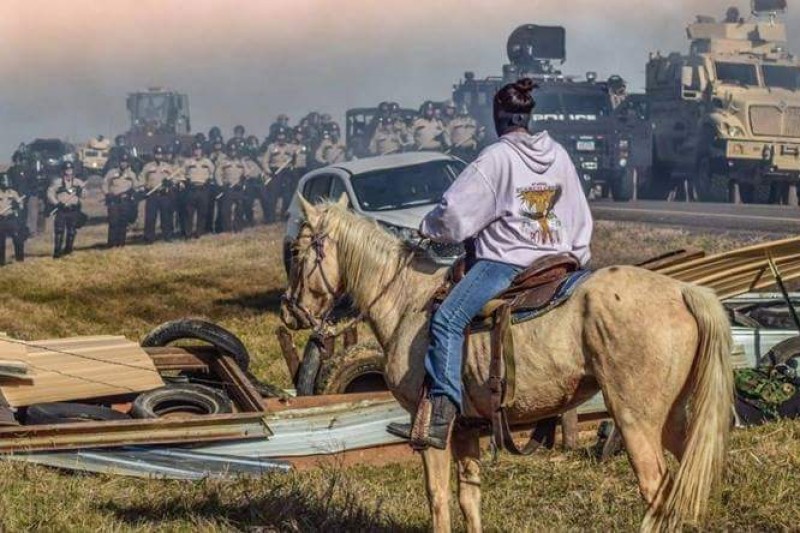Over the course of almost a full year, protestors gathered at the Standing Rock Sioux Reservation in North Dakota to rally against the construction of the Dakota Access Pipeline (DAPL), which, if constructed, would cross into Sioux lands and potentially cause irreversible damage to the reservation’s water supply. The fight against the pipeline was waged on two fronts, the reservation and the courtroom. The physical world and the world of words.
On a broader scale, the showdown at Standing Rock is just another example of a much deeper, older fight between Western and Native culture. A fight that started when Christopher Columbus landed his ships in the Bahamas, claimed it as property of Spain, killed and enslaved Native Americans, and began a process of Westerners stealing land and resources from Indigenous populations that continues into today.
The superiority Western people feel they have over Native people boils down to a critical misunderstanding of Native culture. Western culture and history is recorded as the achievements of rich white men. Native culture has a more communal, holistic approach to recording history, an approach that historically has been categorized as ‘primitive’, or with the racially charged term ‘savage’. Material culture analysis levels the playing field of historical analysis and allows us to examine a culture not just through written records, but through objects of immense cultural significance, objects that give insight into how a culture views the greatest polarities of life. Jules David Prown, the grandfather of material culture analysis, gave us a few examples of these polarities, like life vs. death, acceptance vs. rejection, and security vs. danger. I would like to suggest a few more that I think are helpful in thinking about the cultural divide between Native culture and Western culture: duality vs. nonduality, Capitalism vs. resources, advanced vs. primitive, and individuality vs. community.
This cultural divide, and our conceptions of where these two cultures side on these polarities, is the bedrock upon which Christopher Columbus committed Genocide, upon which Andrew Jackson ravaged lands, and upon which our government built a pipeline across what wasn’t ours. This is why material cultural analysis is so crucially important. The failure of Westerners to understand Native culture and see it as equal to our own, instead of inferior is the crux of one of our Nation’s greatest sins.

